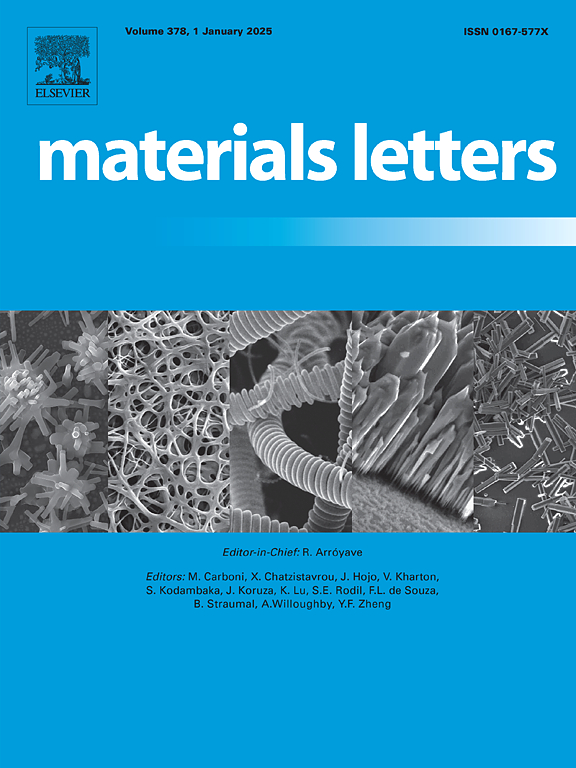利用原子力显微镜测量矿物材料中的粒子间哈马克常数
IF 2.7
4区 材料科学
Q3 MATERIALS SCIENCE, MULTIDISCIPLINARY
引用次数: 0
摘要
Hamaker 常数对于量化粒子间的相互作用力至关重要;然而,由于技术限制,对它的研究一直很有限。虽然原子力显微镜(AFM)可以测量探针与粒子之间的表面相互作用力,但却不能直接测量粒子与粒子之间的相互作用力。为了解决这个问题,本文介绍了一种基于原子力显微镜的测试方法来量化粒子间的相互作用力,以及一种计算 Hamaker 常数的新方法。利用这些方法,研究了水泥和粉煤灰在不同环境下的颗粒间 Hamaker 常数。结果表明,附着力值呈对数正态分布,不同材料的附着力和 Hamaker 常数差异很大。在空气中,不同矿物材料测得的 Hamaker 常数介于 22.79 到 38.26 × 10-20 J 之间,在水中介于 4.79 到 14.47 × 10-20 J 之间,材料特性和测试环境是主要影响因素。本文章由计算机程序翻译,如有差异,请以英文原文为准。
Measurement of inter-particle Hamaker constants in mineral materials using atomic force microscopy
The Hamaker constant is essential for quantifying particles interactions; however, its study has been limited due to technical constraints. While atomic force microscopy (AFM) can measure probe-to-particle surface interaction forces, it cannot directly measure particle-to-particle interaction forces. To address this issue, this paper introduces an AFM-based test method to quantify the interaction force between particles and a new approach for calculating the Hamaker constant. Using these methods, the particle-to-particle Hamaker constants of cement and fly ash in various environments were investigated. Results showed that adhesion values followed a log-normal distribution and that both adhesion and Hamaker constants varied significantly between materials. The measured Hamaker constants of different mineral materials ranged from 22.79 to 38.26 × 10−20 J in air and from 4.79 to 14.47 × 10−20 J in water, with material properties and testing environment identified as primary influencing factors.
求助全文
通过发布文献求助,成功后即可免费获取论文全文。
去求助
来源期刊

Materials Letters
工程技术-材料科学:综合
CiteScore
5.60
自引率
3.30%
发文量
1948
审稿时长
50 days
期刊介绍:
Materials Letters has an open access mirror journal Materials Letters: X, sharing the same aims and scope, editorial team, submission system and rigorous peer review.
Materials Letters is dedicated to publishing novel, cutting edge reports of broad interest to the materials community. The journal provides a forum for materials scientists and engineers, physicists, and chemists to rapidly communicate on the most important topics in the field of materials.
Contributions include, but are not limited to, a variety of topics such as:
• Materials - Metals and alloys, amorphous solids, ceramics, composites, polymers, semiconductors
• Applications - Structural, opto-electronic, magnetic, medical, MEMS, sensors, smart
• Characterization - Analytical, microscopy, scanning probes, nanoscopic, optical, electrical, magnetic, acoustic, spectroscopic, diffraction
• Novel Materials - Micro and nanostructures (nanowires, nanotubes, nanoparticles), nanocomposites, thin films, superlattices, quantum dots.
• Processing - Crystal growth, thin film processing, sol-gel processing, mechanical processing, assembly, nanocrystalline processing.
• Properties - Mechanical, magnetic, optical, electrical, ferroelectric, thermal, interfacial, transport, thermodynamic
• Synthesis - Quenching, solid state, solidification, solution synthesis, vapor deposition, high pressure, explosive
 求助内容:
求助内容: 应助结果提醒方式:
应助结果提醒方式:


